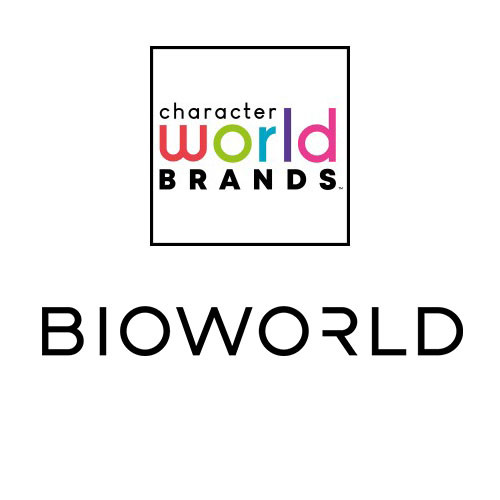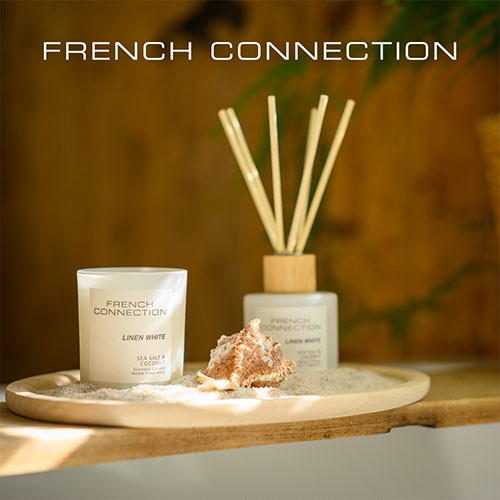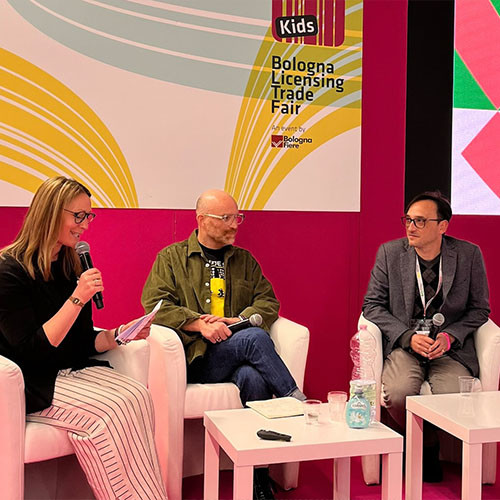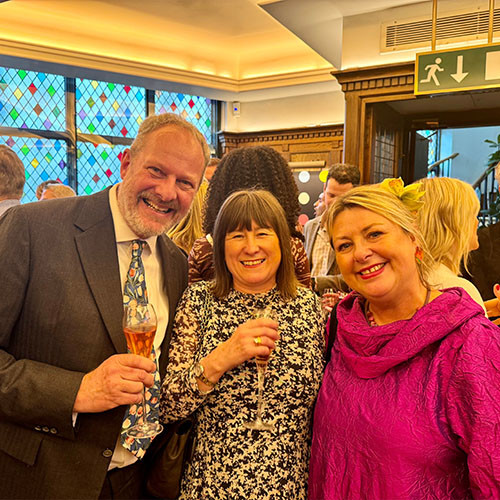Start Licensing’s Ian Downes takes a look at how some non-food retailers are adding to their licensed Christmas gifting this week.
In the run up to Christmas one category of licensing that seems to become more active is that of food – food and drink brands seem to be more active specifically around food gifting.
There are a number of specialist licensees which develop composite gifting ranges in tandem with food companies and retailers buy into these ranges in their Christmas gifting ranges. It is also a time where non-food retailers add these sort of products to their ranges.
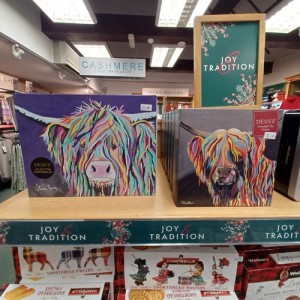 A good example of the latter is Edinburgh Woollen Mills. It is selling a lot of food gifting products at the moment. It stocks products with a connection to Scotland to remain consistent with its overall positioning.
A good example of the latter is Edinburgh Woollen Mills. It is selling a lot of food gifting products at the moment. It stocks products with a connection to Scotland to remain consistent with its overall positioning.
It works with biscuit supplier Deans’ and stocks Deans’ biscuit tins featuring the distinctive and colourful artwork of Stephen Brown. He is well known for his paintings of highland cows and other animals. The tins feature the signature highland cow design – it might be Heather McCoo specifically (my cow knowledge isn’t what it should be). This range is also a great example of how art licensing can make an impact in a competitive sector by providing artwork that is unique and perfectly suited to a specific category. Edinburgh Woollen Mills was also featuring products such as a gift set of whisky flavoured marmalades.
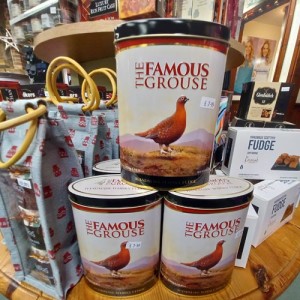 Featured brands included Laphroaig, The Famous Grouse and Glenfarclas. Here brand recognition is important, but of course taste and flavour will be important as well. Similarly it was stocking tins of fudge featuring brands such as The Famous Grouse. Gardiners of Scotland, which is a well established manufacturer, has developed a portfolio of whisky brands including Famous Grouse, Old Pulteney and Laphroaig which it uses to create flavoured fudge ranges. It sells these products in gift tins which feature the brand graphics and other features such as embossing. These type of products work well for the whisky brands as they reinforce their heritage, get them into gifting channels and of course bring some financial benefit – this will include revenue generated from selling whisky for the flavouring to Gardiners.
Featured brands included Laphroaig, The Famous Grouse and Glenfarclas. Here brand recognition is important, but of course taste and flavour will be important as well. Similarly it was stocking tins of fudge featuring brands such as The Famous Grouse. Gardiners of Scotland, which is a well established manufacturer, has developed a portfolio of whisky brands including Famous Grouse, Old Pulteney and Laphroaig which it uses to create flavoured fudge ranges. It sells these products in gift tins which feature the brand graphics and other features such as embossing. These type of products work well for the whisky brands as they reinforce their heritage, get them into gifting channels and of course bring some financial benefit – this will include revenue generated from selling whisky for the flavouring to Gardiners.
Garden centres are also a big outlet for licensed food products at this time of the year. This goes beyond gifting into ‘Christmas treat’ products. For example a local independent garden centre I visited was selling mince pies from Walkers featuring the Glenfiddich brand and flavour. Other categories of products that feature whisky brands include Christmas puddings and cakes. Rather like the fudge example, these kind of products help the whisky brands become part of consumers’ Christmas traditions and create a new way of engaging with consumers.
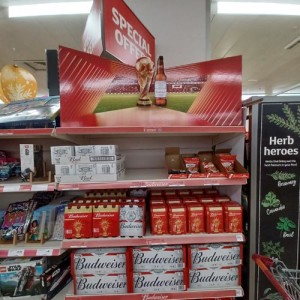 I noticed something similar related to the World Cup in Sainsbury’s this week. It had a gondola end feature for Budweiser beer supported by an elaborate header card that featured the World Cup. I believe Budweiser is an official World Cup partner and as such are leveraging this connection in-store. The fixture featured a range of core Budweiser products but it also included Budweiser branded and flavoured beer nuts developed under licence by Humdinger. I thought this was a great example of licensing being coordinated with and integrated into core brand activity. For Budweiser it increases its on shelf presence, but also extends the brand experience and sense of occasion – this works well particularly in terms of shared experience with family and friends.
I noticed something similar related to the World Cup in Sainsbury’s this week. It had a gondola end feature for Budweiser beer supported by an elaborate header card that featured the World Cup. I believe Budweiser is an official World Cup partner and as such are leveraging this connection in-store. The fixture featured a range of core Budweiser products but it also included Budweiser branded and flavoured beer nuts developed under licence by Humdinger. I thought this was a great example of licensing being coordinated with and integrated into core brand activity. For Budweiser it increases its on shelf presence, but also extends the brand experience and sense of occasion – this works well particularly in terms of shared experience with family and friends.
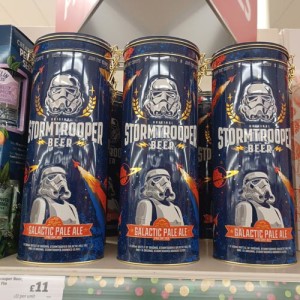 Returning to gifting, Sainsbury’s was also selling a gift tin of Original Stormtrooper Beer specifically Galactic Pale Ale. The gift tin was really well designed and presented. I can imagine it will prove popular and is a good example of the value of investing in packaging in the gifting category.
Returning to gifting, Sainsbury’s was also selling a gift tin of Original Stormtrooper Beer specifically Galactic Pale Ale. The gift tin was really well designed and presented. I can imagine it will prove popular and is a good example of the value of investing in packaging in the gifting category.
A well presented product should perform better and elicit a good response from consumers who are looking to buy something special at this time of the year.
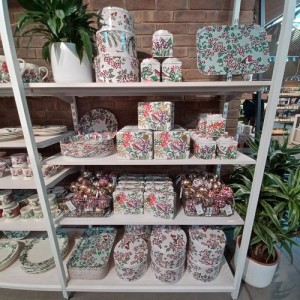 I visited the RHS Wisley Garden this week and took the chance to have a look around the gift shop. It is a relatively new shop and is really well presented. It carries a variety of products and blends ‘own brand’ products, RHS licensed products and ranges bought in that are licensed and non-licensed. Categories supported include books, greetings cards, food, children’s products, giftware, jewellery and stationery. Product is well presented and given good display space.
I visited the RHS Wisley Garden this week and took the chance to have a look around the gift shop. It is a relatively new shop and is really well presented. It carries a variety of products and blends ‘own brand’ products, RHS licensed products and ranges bought in that are licensed and non-licensed. Categories supported include books, greetings cards, food, children’s products, giftware, jewellery and stationery. Product is well presented and given good display space.
One licensed range that stood out was a collection of Emma Bridgewater licensed products that included Elite Tins. Emma Bridgewater’s designs fit in well with the RHS as many of them lean on themes from nature including floral designs. The RHS shop had really backed this range and invested in it in depth moving into other categories such as paper napkins. This is a strategy that I think works well as the range was eye-catching and you can imagine consumers buying multiple items to build their own collection. Of course these items also make great gifts. In the context of the RHS Emma Bridgewater is also a brand and designer that is recognised and trusted.
The RHS also stocks a range of Morris & Co ceramics from Royal Worcester. Again the design fits in well with the RHS – they feature the Strawberry Thief design – and there is a connection to the Arts & Craft movement and gardening. Indeed William Morris features in Wisley’s education programme. The Royal Worcester fine bone china mugs are well presented in gift boxes and, rather like the Stormtrooper tin, it is clear there has been a decision to invest in packaging that helps sell the product, but also packaging that is highly likely to have a second life. The gift boxes are so well made and designed that you can imagine people using them for storage. In another part of the store there was a range of Spode William Morris tea pots. Again well displayed and supported in-store but also packaged in a premium way.
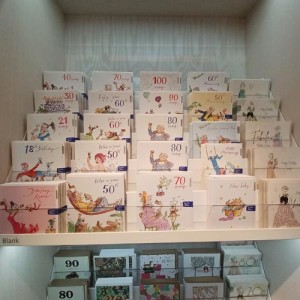 Another product range that caught my eye at Wisley, and one that was supported in depth, was a range of Quentin Blake greeting cards. This range, which I think is published by Woodmansterne, had a range of age cards stretching from 18 to 100. Each of the age cards had a different design and theme but all had a certain charm to them. They worked well as a collection and other featured occasions included Anniversary and New Baby.
Another product range that caught my eye at Wisley, and one that was supported in depth, was a range of Quentin Blake greeting cards. This range, which I think is published by Woodmansterne, had a range of age cards stretching from 18 to 100. Each of the age cards had a different design and theme but all had a certain charm to them. They worked well as a collection and other featured occasions included Anniversary and New Baby.
Not all shops have as much space as the Wisley shop does, but what this Quentin Blake display shows is the benefit and impact of showcasing a range in depth, it works well and not least when it is one that features illustrations as good as Quentin Blake’s are. This range also shows how important it is to select images that suit the card occasion and make the most of the artwork.
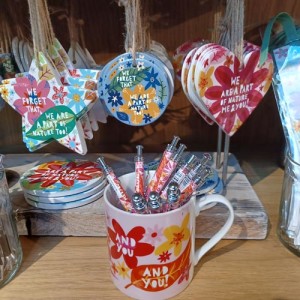 It was also good to see products such as calendars and puzzles from artists like Angela Harding being supported. There was a good selection of art licensing lead products on sale.
It was also good to see products such as calendars and puzzles from artists like Angela Harding being supported. There was a good selection of art licensing lead products on sale.
It is good to see the RHS supporting the artist community. Indeed, it has an exclusive range in-store that it has developed with illustrator Rob Ryan. These sort of artist collaborations can help retailers like RHS offer bespoke products that are well suited to their location and consumer while also supporting the creative community.
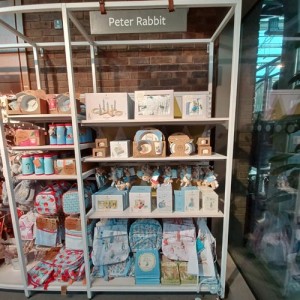 Other brands featured in the RHS shop included Peter Rabbit, with a dedicated bay in the shop with a focus on items such as dining ware and plush. Of course the RHS is also supporting its own designs and licensees. For example there is a lovely range of Bamboo Fibre Lunchboxes and Drinkware by Dexam. The RHS also has ranges with licensees such as Heathcote & Ivory. The shop at Wisley and I imagine at other RHS sites is a great platform for licensees to build from and also acts as a good showcase to demonstrate to other retailers how the product can work at retail.
Other brands featured in the RHS shop included Peter Rabbit, with a dedicated bay in the shop with a focus on items such as dining ware and plush. Of course the RHS is also supporting its own designs and licensees. For example there is a lovely range of Bamboo Fibre Lunchboxes and Drinkware by Dexam. The RHS also has ranges with licensees such as Heathcote & Ivory. The shop at Wisley and I imagine at other RHS sites is a great platform for licensees to build from and also acts as a good showcase to demonstrate to other retailers how the product can work at retail.
There was also a good selection of books at Wisley including the RHS licensed ranges which include adult and children’s books. It also stocks a wide range of cookery and recipe books including Nadiya Hussain’s books. This feeds back into the movement towards ‘growing your own’ ingredients which is a theme that runs throughout Wisley.
I suppose the measure of the success and appeal of a shop is buying something. I went into the RHS Wisley shop with no intention to purchase – my original plan was to do some research, but I actually ended up buying five or six products… this is largely due to the product selection, how the product was displayed and the product mix. It was a very enjoyable and successful shopping trip for me – a reminder that an investment in design, display and depth of product can pay off for retailers.
Ian Downes runs Start Licensing, an independent brand licensing agency. His Twitter handle is @startlicensing – he would welcome your suggestions for what to look out for.














